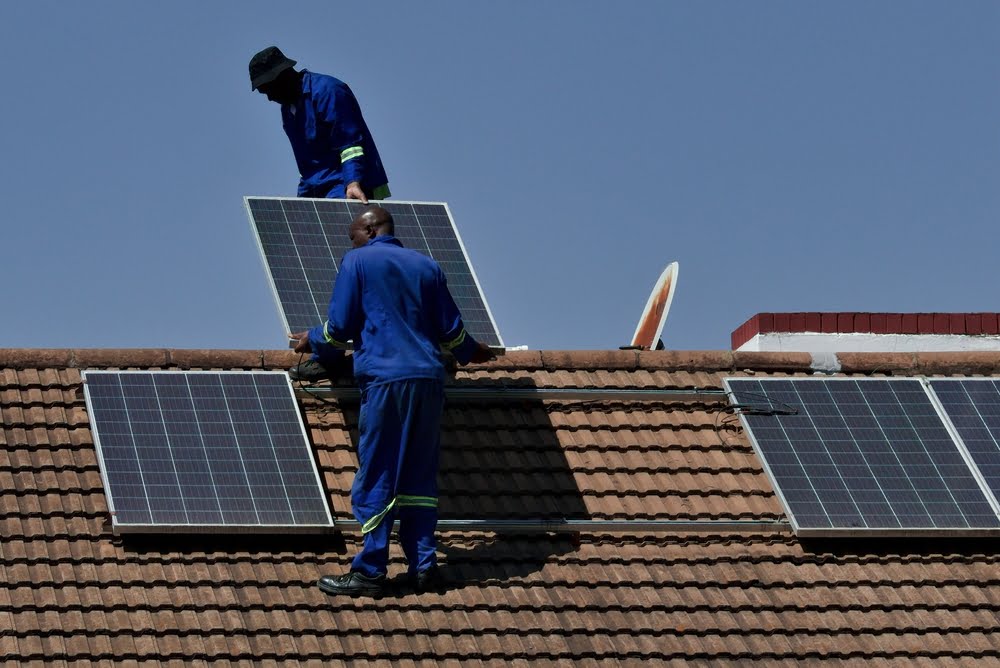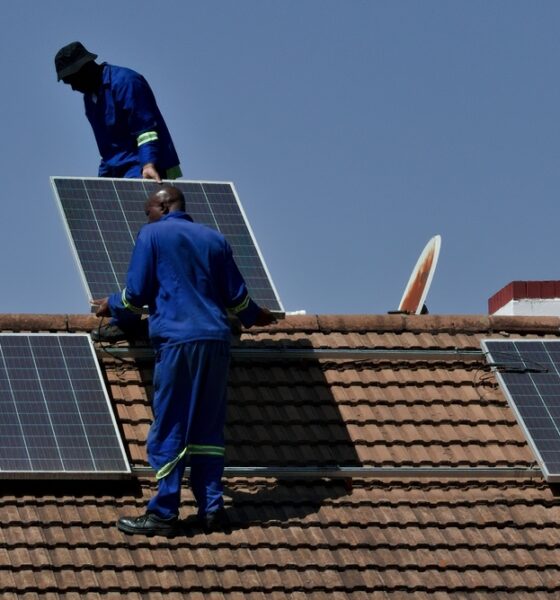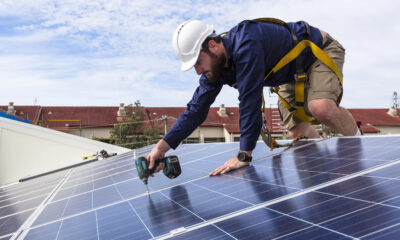

Energy
The Beginner’s Guide to Installing Solar Panels On Your Home
The amount of energy produced with Residential solar power is increasing significantly. An estimated 3.9 gigawatts of power was generated through residential solar panels in 2021. This was a 34% increase from the previous year.
Solar power is drastically changing the state of the energy industry. A growing number of people are investing in solar power as they strive to lower the carbon footprints.
Companies all over the world are working on creating new solar technology and scaling production. Reuters recently published an article talking about an Indian solar company that is planning on investing $1.5 billion in American factories to take advantage of the growing number of people that want to invest in solar power.
Despite the rapidly growing number of Americans that are interested in solar power, many people are still struggling to deal with the learning curve of investing in it. Fortunately, setting up solar power systems in your home is a lot easier if you know what to do. Keep reading to learn more.
Picture a world where your home is not just an energy consumer but also generates it. Your rooftop becomes a silent powerhouse, capturing the sun’s rays and transforming them into clean, renewable electricity. This was a dream of many–but not anymore.
Solar energy is real now, with many homes installing solar panels. Whether you’re motivated by financial savings, a desire for energy independence, or simply a concern for the environment, this guide shares everything you need to know about installing solar panels on your home, so you can take your first steps into the world of solar energy.
Installing Solar Panels Step-By-Step
There are a number of huge benefits of using solar power. But how do you go about setting up solar panels? Follow the steps listed below.
Assessing Your Home’s Solar Potential
Before diving into the installation process, assessing whether solar panels suit your home conditions is essential. Factors such as roof orientation, shading from trees or nearby structures, and the available roof space will impact the efficiency and output of your solar panel system.
Start by examining your roof’s position and if it receives ample sunlight throughout the day. Ideally, a south or southwest-facing roof with minimal shading will maximize the energy harvested from the sun.
Estimating Your Energy Needs
To ensure your solar panel system meets your energy requirements, estimate your household’s electricity needs. Review your past energy bills to gauge your average monthly and annual consumption. This information will help you determine the size of the solar panel system you must install.
Covering 100% of your energy needs is ideal but might not be necessary or feasible, as it depends on budget and available roof space.
Choosing the Right Solar Panel System
Solar panels come in various types, sizes, and efficiencies. When selecting a solar panel system, consider factors like efficiency ratings, warranties, and the manufacturer’s reputation.
Monocrystalline, polycrystalline, and thin-film solar panels are the most common options for residential solar. Research different brands and consult with a reputable solar roofing contractor in New Jersey to make an informed decision that suits your specific needs and budget.
Hiring a Professional vs. DIY Installation
While some homeowners opt for a DIY installation, you should weigh the pros and cons of this approach. Hiring a professional solar installer ensures proper installation, adherence to building codes, and the possibility of qualifying for rebates or incentives. However, a DIY installation can save you money if you possess the necessary skills and knowledge.
Obtaining Permits and Approvals
Installing a solar panel system requires obtaining permits and approvals from local authorities. Depending on your state, these include building permits, electrical permits, and interconnection agreements with your utility company. Research your local regulations and consult with professionals to ensure compliance with all requirements.
The Installation Process
The installation process may vary according to the solar panel type. But here are the fundamental steps for installing solar panels on your home:
Mounting: Solar panels are securely attached to racking systems and then installed on your roof or ground-mounted, depending on your circumstances. Consider the angle you mount the panels on, as optimal sun exposure ensures maximum energy output.
Wiring: Once the panels are in place, wire them together and connect them to an inverter. The inverter converts the DC electricity the panels produce into alternating current (AC) electricity used in your home.
Connection to the Grid: If you opt for a grid-tied system, connect the inverter to your utility’s electrical grid. This allows you to export excess electricity when your panels produce more than your home consumes and import power when needed.
This is a complicated and dangerous process, as improper connection and contact with high power lines can cause major damage to your home. Consider hiring professionals to connect your inverter to the grid.
Key Takeaways
Installing solar panels on your home is an investment into a better and brighter future, but it requires knowledge and skills. Once installed, the rewards outweigh the initial efforts. Remember these steps when installing solar panels on your home:
- Assessing your home’s solar potential ensures optimal sun exposure and maximum energy production. Consider factors like roof orientation and shading to determine the feasibility of a solar panel system on your property.
- Analyze your past energy consumption to determine the appropriate solar panel system size that can cover a significant portion of your electricity requirements.
- Explore options like monocrystalline, polycrystalline, and thin-film panels to find the most suitable solution for your needs and budget.
- Decide whether to hire a professional solar contractor or do it yourself.
- Research the necessary permits, electrical agreements, and interconnection requirements to proceed smoothly with your installation.
- The installation involves securely mounting the panels, wiring them together, and connecting them to an inverter.
Once installed, you’ll enjoy the benefits of solar energy, including reduced energy costs, minimized negative environmental impact, increased property value, and government incentives.






























